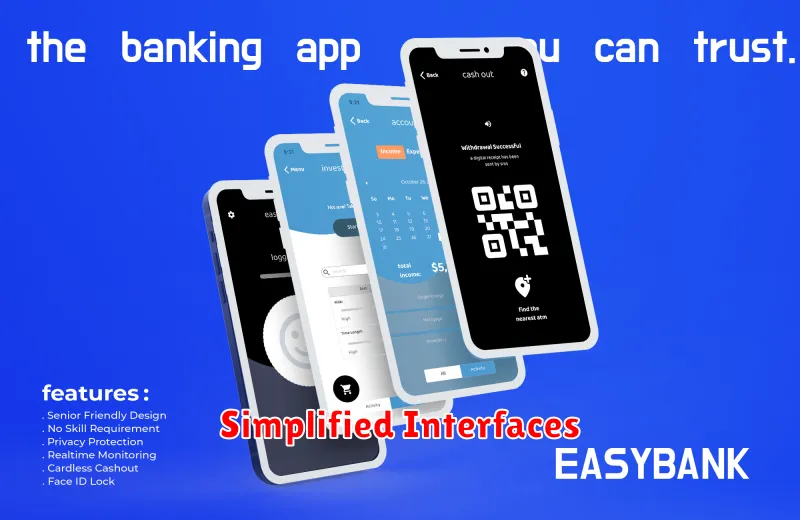Are you a senior considering making the switch to digital banking? Or perhaps you’re helping an older loved one navigate the increasingly digital financial landscape. With the rise of online banks and mobile banking apps, it’s a valid question to ask: Are digital banks truly suitable for seniors? This article explores the advantages and disadvantages of digital banking for senior citizens, considering factors such as accessibility, security, and the unique needs of older adults. Understanding the potential benefits and challenges will empower you to make informed decisions about whether digital banks align with your or your loved one’s financial goals and comfort levels.
Digital banking offers several alluring features, including 24/7 account access, often higher interest rates on savings accounts, and the convenience of managing finances from anywhere. However, for some seniors, the transition to a purely digital platform can be daunting. Concerns about online security, navigating new technologies, and the lack of in-person support are understandable. We will delve into these concerns, examining the potential drawbacks of digital banking for seniors and offering strategies to mitigate those risks. Ultimately, the suitability of digital banks depends on individual needs and preferences. This article provides the information needed to make an educated decision regarding digital banking for yourself or a senior in your life.
Accessibility Features for Elderly
Digital banks are increasingly incorporating features to improve accessibility for elderly users. These features aim to bridge the digital divide and make online banking more user-friendly for seniors.
Large font sizes and high contrast displays are crucial for users with visual impairments. These features improve readability and reduce eye strain.
Simplified user interfaces with clear navigation are essential. Minimizing clutter and complexity helps seniors easily navigate the app or website.
Voice-activated commands and screen reader compatibility allow users with limited dexterity or vision to interact with the platform effectively.
Multi-factor authentication options, beyond SMS codes, cater to seniors who might not always have access to their mobile phones. These alternatives may include biometric logins or authentication apps.
Some digital banks offer dedicated customer support channels specifically for elderly clients, providing personalized assistance and addressing their unique needs.
Simplified Interfaces

A key advantage of digital banks for seniors lies in their simplified interfaces. Traditional banking apps and websites can be cluttered with numerous features and complex navigation, potentially overwhelming older users. Digital banks often prioritize a clean, minimalist design, focusing on essential functions like balance checks, transfers, and bill payments. This streamlined approach can make navigating the app considerably easier for seniors with varying levels of tech proficiency.
Large fonts and high-contrast color schemes are also common features, improving readability and accessibility for those with impaired vision. Some digital banks even offer voice-guided navigation or simplified versions of their apps specifically tailored for senior citizens.
These design choices aim to reduce cognitive load and make online banking a more manageable and less daunting experience for older adults.
Voice Commands and Large Text
Many digital banks are incorporating features to improve accessibility for seniors. Voice commands, for instance, allow users to conduct transactions, check balances, and even pay bills simply by speaking to their device. This is particularly helpful for seniors who may have difficulty typing or navigating on a smaller screen.
Furthermore, the availability of large text options within the app interface can significantly improve readability. Larger fonts make it easier for users with diminished eyesight to navigate menus, read transaction details, and understand important information displayed on the screen. These accessibility features contribute to a more user-friendly experience for senior citizens embracing digital banking.
Customer Support Availability
A key consideration for seniors when choosing a digital bank is the availability and accessibility of customer support. While many digital banks offer 24/7 support through channels like email and chat, some seniors may prefer the reassurance of phone support or in-person assistance.
It’s important to research the different customer service options offered by each digital bank. Look for banks that provide support through multiple channels and consider whether those channels align with your preferred methods of communication. Some digital banks may offer video tutorials or dedicated senior support lines.
Investigate the response times for various support channels. Prompt responses are crucial, particularly when dealing with urgent account issues.
Educational Resources
Seniors can benefit from various educational resources to better understand digital banking and its implications. Workshops and seminars offered by community centers, libraries, and even some financial institutions provide a structured learning environment. These sessions often cover topics such as online security, mobile banking apps, and fraud prevention.
Online tutorials and guides are readily available, catering to different learning styles and paces. These resources can be accessed from the comfort of one’s home and revisited as needed. Look for resources offered by reputable organizations such as government agencies or established financial literacy websites.
Family members can also be valuable resources. Children or grandchildren who are comfortable with technology can provide personalized assistance and guidance. However, it is crucial for seniors to maintain control over their finances and avoid sharing sensitive information like passwords.
Security for Peace of Mind
A primary concern for seniors considering digital banking is security. It’s vital to understand the safeguards in place to protect their finances. Digital banks employ various security measures, often exceeding those of traditional institutions. These include multi-factor authentication, biometric logins, and real-time transaction monitoring.
Multi-factor authentication adds an extra layer of protection, requiring users to verify their identity through multiple channels, like a password and a one-time code sent to their phone. Biometric logins, such as fingerprint or facial recognition, offer a convenient and secure way to access accounts.
Furthermore, digital banks often employ sophisticated fraud detection algorithms that analyze transactions for suspicious activity. If anything unusual is detected, the bank will immediately alert the customer.

